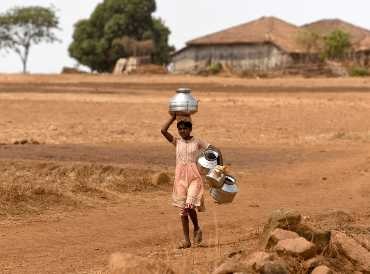UKCEH has long-standing expertise in using data to monitor current hydrometeorology within the UK and internationally.
Our capability in this area includes:
- Assessing the current and likely hydrometeorological conditions at national and larger scales, and their impact on the environment and society
- Helping partners use information about current hydrometeorological conditions to inform management and policy decisions.

 UKCEH worked with government agencies and university partners in India to develop an interactive web application to aid drought decision-making.
UKCEH worked with government agencies and university partners in India to develop an interactive web application to aid drought decision-making.